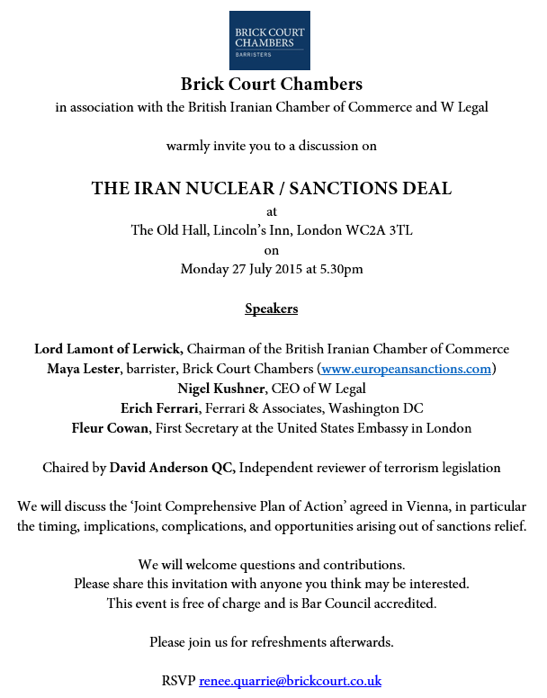The Repercussions of Iran’s Ballistic Missile Tests
Controversy is stirring over Iran’s conduct of two ballistic-missile tests since the July nuclear agreement – both of which are in violation of United Nations Security Council Resolution 1929 (though not perhaps in violation of the pending United Nations Security Council Resolution 2231). Last week, Senate Republicans – led by Sen. Kelly Ayotte (R-NH) – delivered a letter to the President urging him “not [to] lift sanctions on Iran that would provide billions of dollars in economic relief” in light of “Iran’s blatant disregard for its international obligations…”
Close to two dozen Senate Democrats followed with a letter of their own to the President requesting the Obama administration to “take action unilaterally, or in coordination with [the U.S.’s] European allies…to make clear to Iran’s leaders that there will be consequences for future violations of UN Security Council Resolutions and that the United States reserves the right under the JCPOA to take unilateral action in response to [the ballistic missile tests] and other significant actions by Iran in the areas of ballistic missile development, terrorism, and human rights.”
There are hints that the Obama administration is considering further sanctions designations under Executive Order 13382 targeting those involved in Iran’s ballistic missile program. One problem with this approach, however, is the relative scarcity of Iranian entities and individuals available for sanctions designation. Most of the key coordinators, managers, operators, and middlemen involved in Iran’s ballistic missile program have been and are currently sanctioned pursuant to EO 13382. That leaves little for the Obama administration to do – and even less that will have the desired impact on Iran’s future behavior.
Iran’s ballistic missile program was targeted at the inception of Executive Order 13382. Three Iranian entities – the Aerospace Industries Organization (“AIO”), Shahid Hemmat Industrial Group (“SHIG”), and Shahid Bakeri Industrial Group (“SBIG”) – were included in the Annex to Executive Order 13382. According to OFAC, AIO “oversees all of Iran’s missile industries and is the overall manager and coordinator of Iran’s missile program.” SHIG “is responsible for Iran’s ballistic missile program, most notably the Shahab series of medium-range ballistic missiles,” while SBIG “produces the Fateh-110 missile…and the Fajr rocket systems.”
Soon thereafter, the U.S. State Department designated Iran’s Defense Industries Organization (“DIO”) under Executive Order 13382 “for engaging in activities that have materially contributed to the development of Iran’s nuclear and missile programs.” Later, the U.S. State Department designated the IRGC and MODAFL under EO 13382. According to the U.S. State Department, MODAFL “controls the Defense Industries Organization…and has ultimate authority over Iran’s Aerospace Industries Organization,” while the IRGC “is one of the primary regime organizations tied to developing and testing the Shahab-3.”
Middlemen involved in Iran’s ballistic missile program have also been designated for sanctions. In April 2009, the U.S. Treasury Department designated a Chinese national Karl Lee – the commercial manager of LIMMT Economic and Trade Co. Ltd. – for selling “needed goods such as graphite to entities involved in Iran’s missile program.” Several front companies were also designated for being aliases of LIMMT, the Chinese firm.
In June 2010, OFAC designated the Naval Defense Missile Industry Group for “being involved in the development and production of cruise missiles, as well as being responsible for naval missiles.” OFAC also designated the operators of Iran’s ballistic missile program, including the IRGC Air Force and IRGC Missile Command, both of which are regarded by the U.S. Treasury Department as “key elements in the operational deployment of Iran’s ballistic missile capability.”
In July 2012, the U.S. Treasury Department and the U.S. State Department have also targeted the network of proliferators supporting Iran’s ballistic missile program. This included the Electronic Components Industries Co. and Information Systems Iran, which together provide a range of military products including electro-optics and lasers, communication equipment, telecommunication security equipment, electronic warfare equipment, new and refurbished radar tubes and missile launchers, as well as semi-conductors, multilayer single and double-sided printed circuit boards, hybrid circuits, quartz crystals and oscillators, high purity oxygen and nitrogen gases, and micromodules and electronic ceramics.
These are some of the significant actions that U.S. authorities have taken to target entities and individuals involved in Iran’s ballistic missile program. By already targeting the key coordinators, managers, operators, middle-men and proliferators of Iran’s ballistic missile program, however, U.S. authorities have little left to target for sanctions – certainly, not enough to impact Iran’s decision to continue development of its ballistic missile arsenal. Indeed, whatever sanctions the Obama administration deploys in response to Iran’s recent ballistic missile tests seem more apt to satisfy its Congressional critics, as noted above, than to impact Iran’s decision-making.
That should lead to some serious thinking as to the ultimate purposes of U.S. sanctions, as well as their limits in exacting a change in their target’s behavior. Especially where a target’s core security concerns are the subject of U.S. sanctions — as is the case with Iran’s ballistic missile program, which Iran not unreasonably views as a conventional deterrent to its regional antagonists. Unable to yet change Iran’s pursuit of an extensive ballistic missile capability and without further options to seriously impact Iran’s decision-making in this area, critics in the U.S. Senate don’t yet seem to appreciate the limits of U.S. sanctions and their lack of utility in situations where a target’s core security interests are concerned.

